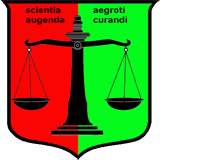Institute for Response-Genetics (e.V.)Chairman: Prof. Dr. Hans H. StassenPsychiatric Hospital (KPPP), University of Zurich |

|


|
Longterm StabilityUnder constant experimental conditions most EEG characteristics display a broad range of inter-individual differences, while being remarkably stable over time within subjects. Correlation coefficients are typically in the range of r=0.7-0.9 for repeated assessments at 14-day and 5-year intervals. Even a computerized recognition of persons by EEG spectral patterns has turned out to be possible at classification error rates of <5% for a random sample of 87 healthy subjects. Reports on the distinct individuality of human brain wave patterns date back to the very beginning of EEG research, when Travis and Gottlober published two articles entitled "Do brain waves have individuality" [1936] and "How consistent are an individual’s brain potentials from day to day?" [1937], and Davis and Davis published the first EEG twin study stating that the "within-pair differences of the resting EEG derived from monozygotic twins were not greater than the fluctuations within a single subject over time" [1936]. Trait-Like QualitiesAll these findings suggest that EEG characteristics possess trait-like qualities which might be attributable to genetic predisposition. In fact, there is presumptive evidence from numerous studies on monozygotic and dizygotic twins, that the inter-individual variability of the human EEG under "normal" resting and sleep conditions is not just familial but heritable. Continuous Phenotype RangeThe variation of EEG characteristics forms a continuous, approximately normally distributed "phenotype range" rather than discrete phenotype classes, thus suggesting that the variation is quantitative and that the average phenotypic differences between genotypes may be small compared with the variation between individuals within genotypes. Inheritance was found not to follow simple Mendelian modes in the great majority of parameters used to quantify EEG characteristics. References
Stassen HH, Bachmann S, Bridler R, Cattapan K, Herzig D, Schneeberger A, Seifritz E. Inflammatory
Processes linked to Major Depression and Schizophrenic Disorders and the Effects of Polypharmacy
in Psychiatry: Evidence from a longitudinal Study of 279 Patients under Therapy. Eur Arch
Psychiatry Clin Neurosci. 2021; 271(3): 507-520
[get the article]
Braun S, Bridler R, Müller N, Schwarz MJ, Seifritz E, Weisbrod M, Zgraggen A, Stassen HH:
Inflammatory Processes and Schizophrenia: Two Independent Lines of Evidence from a Study
of Twins Discordant and Concordant for Schizophrenic Disorders. Eur Arch Psychiatry Clin
Neurosci 2017; 267: 377-389
[get the article]
Braun S, Bridler R, Müller N, Schwarz MJ, Seifritz E, Weisbrod M, Zgraggen A, Stassen HH:
Inflammatory Processes and Schizophrenia: Two Independent Lines of Evidence From a Study
of Twins Discordant and Concordant for Schizophrenic Disorders. Neuropsychopharmacology
2016; 41: S414–S415
Stassen HH, Delfino JP, Kluckner VJ, Lott P, Mohr C: Vulnerabilität und psychische Erkrankung.
Swiss Archives of Neurology and Psychiatry 2014; 165(5): 152-157
Stassen HH, Angst J, Hell D, Scharfetter C, Szegedi A: Is there a common resilience mechanism
underlying antidepressant drug response? Evidence from 2'848 patients. J Clin Psychiatry 2007;
68(8): 1195-1205
Buckelmüller J, Landolt HP, Stassen HH, Achermann P: Trait-like individual differences in the
human sleep EEG. Neuroscience 2006; 138: 351-356
Weisbrod M, Hill H, Sauer H, Niethammer R, Guggenbühl S, Stassen HH: Nongenetic pathologic
developments of brain-wave patterns in monozygotic twins discordant and concordant for
schizophrenia. Am J Med Genetics B 2004; 125: 1-9
Stassen HH: EEG and evoked potentials. In: D. Cooper (ed) Nature Encyclopedia of the Human
Genome. Nature Publishing Group, London 2003; 3: 266-269
Umbricht D, Koller R, Schmid L, Skrabo A, Grübel C, Huber T, Stassen HH: How specific are
deficits in mismatch negativity generation to schizophrenia? Biol Psychiatry 2003; 53:
1120-1131
Dünki RM, Schmid GB, Stassen HH: Intraindividual specificity and stability of the human EEG:
Linear vs. nonlinear approaches. Meth Inform Med 2000; 39: 78-82
Stassen HH, Coppola R. Torrey EF, Gottesman II, Kuny S, Rickler KC, Hell D: EEG differences in
monozygotic twins discordant and concordant for schizophrenia. Psychophysiology 1999; 36,1:
109-117
Stassen HH, Bomben G, Hell D: Familial brain wave patterns: study of a 12 sib family. Psychiat
Genetics 1998; 8: 141-153
Dünki RM, Schmid GB, Scheidegger P, Stassen HH, Bomben G, Propping P: Reliable computer-assisted
classification of the EEG: EEG variants in index cases and their first-degree relatives.
Am J Med Genetics B 1996; 67,1: 1-8
Kaprio J, Buchsbaum M, Gottesman II, Heath A, Körner J, Kringlen E, McGuffin P, Propping P,
Rietschel M, Stassen HH: What can twin studies contribute to the understanding of adult
psychopathology? In: T.J. Bouchard jr. and P. Propping: Twins as a tool for behavioral
genetics. Chichester: John Wiley & Sons, Dahlem Workshop Reports, Life Sciences Research
Report 1993; 53: 287-299
Stassen HH, Lykken DT, Propping P: Zwillingsuntersuchungen zur Genetik des normalen
Elektroenzephalogramms. In: P. Baumann (ed): Biologische Psychiatrie der Gegenwart, Wien:
Springer 1993, 139-144
Stassen HH, Lykken DT, Propping P, Bomben G: Genetic determination of the human EEG (survey
of recent results from twins reared together and apart). Human Genetics 1988; 80:
165-176
Stassen HH, Lykken DT, Bomben G: The within-pair similarity of twins reared apart. Eur Arch
Psychiatr Neurol Sci 1988; 237: 244-252
Stassen HH, Bomben G, Propping P: Genetic aspects of the EEG: an investigation into the
within-pair similarity of monozygotic and dizygotic twins with a new method of analysis.
Electroenceph clin Neurophysiol 1987; 66: 489-501
Stassen HH: The similarity approach to EEG analysis. Meth Inform Med 1985; 24: 200-212
Stassen HH: Computerized recognition of persons by EEG spectral patterns. Electroenceph
clin Neurophysiol 1980; 49: 190-194
|
|

Intra-individual stability of EEG spectral patterns: first measurement (upper half) versus second measurement 5 years later (lower half). |
|
| [ Mail to Webmaster ] k454910@ifrg.ch |